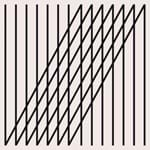Jonathan Carter was one of those rare people who mid-life took a new career path as an antique clock dealer and then made such a success of it as, in a comparatively short time, to become arguably the leading dealer in his field.
He specialised in clocks of the golden age of London clockmaking, approximately 1660-1780, plus good clocks made thereafter. In that period are found the pre-eminent clockmakers such as Ahasuerus Fromanteel, Thomas Tompion, Joseph Knibb, Daniel Quare, George Graham and Thomas Mudge, all of which he specialised in.
Army service
After school at Radley, shoehorned by a school-time army scholarship, he reluctantly joined the army and from Sandhurst entered the 14/20 Hussars.
This no doubt honed his innate organisational ability, giving him the skills to manage a grand projet, as in the number of leading, large, single-owner collections he went on to sell, which previously would have been consigned to auction. These included those of Tom Scott of Jersey (in two tranches, 2015/16), the Hamburg Collection (2018), the Charles Collection from Chicago, and the Taylor Collection from the Isle of Man (in three tranches, 2020/21/22). All-in-all he handled some of the finest and rarest clocks that have ever come to market.
He had been interested in clocks from an early age, spurred by a youthful visit to Greenwich and the clocks of the former observatory, but did not follow that enthusiasm straight from the army.
Jonathan instead went into the clothing trade, forming a joint venture in Cirencester with a retail shop in a back street. This was soon upgraded by a merger with a similar retailer in the market place, where he then, with great success, concentrated his efforts in creating a leading country-town equivalent of Hackett or Cordings. His pivotal role is shown by the collapse of the company since his departure.
The draw of horology could not be resisted, however, Jonathan selling up in 1997 and enrolling in the clock restoration course at West Dean. His tutor there, Roger Still, commented within the year’s course to Jonathan that he may have had a fabulous eye and great understanding of horology, architecture and history, but he was never going to make a good clockmaker.
His feel for architecture and design was evident not only in the polished look of his yearly stand at the Masterpiece fair, but also in the miniature Chelsea pied-a-terre flat he recently transformed so successfully and in the re-erected staddle barn he had fitted up as a clock showroom at his house in Gloucestershire.
He had also previously done up a semi-derelict Gloucestershire cottage as the initial family home, installing a new ‘traditional’ staircase beside a chimneystack that a planning officer opined was glorious to see as a rare survival of old.
That eye for a good clock and practical understanding of horology, via a year’s experience at the bench, stood him in excellent stead as he launched himself in his new career and rapidly ascended to prime position in the dealing community. He dealt as a sole operator from 1998, then joining forces with ex-Christie’s Ben Wright in 2006. They went their different ways in 2012, Jonathan by the start of 2013 acquiring the clock shop in Winchester founded in 1947 by GH Bell and latterly run by Gerald Marsh.
The shop will continue under the steady hand of his colleague Darrell Dipper, originally trained under Marsh.
Eye for history
Jonathan’s experience in practical clockmaking and antique restoration, not unique among colleagues, was coupled with a very rare ability to observe and synthesise historical developments in clocks.
The annual stock catalogues that he started to produce from his first year heading Carter-Marsh were produced with attendance in mind at the Masterpiece fair every year. They raised the bar on dealer catalogues past anything seen previously.
His catalogues had soon developed more in the nature of considerable studies on antiquarian horology, which led naturally into publishing major horological books, which were used as integral planks in the marketing of the major collections he secured for sale. In these successive publications he led the field, far exceeding any contribution from the national museums.
The first was a monograph on Tompion (2014), written with Jeremy Evans and Ben Wright, published to mark that maker’s tercentenary. It was followed in 2015 by The Golden Age, a catalogue raisonné of the Scott collection interleaved with learned essays on related clock subjects.
In 2020/21/22 he published three successive catalogues of the Taylor collection, and at the time of his death a monograph on Fromanteel was being worked up in celebration of the Taylor Collection, whose founding impulse was of course the clocks of that maker.
Charm and sense of fun
Much to be missed, he was charming, great fun, an undoubted bon viveur (regularly hosting at the Italian eatery just behind his Chelsea flat) and highly supportive of his colleagues and associates, plus an inveterate problem solver, repeatedly finding ways round intractable difficulties. He wielded this skill in aid of personal friends, especially those going through marital breakups, as well as in serving his clock clients in arranging sales.
Jonathan’s 1992 marriage failed 20 years later, and he leaves three children: Gus, deputy features editor of the Spectator, Lettice, a marketing executive, and Ottilie, currently studying for an MSc in psychology.
His cumulative publications will, however, remain as his lasting personal legacy. It is hoped the Fromanteel book will be finished in his absence, which besides being an appropriate curtain-drop on that collection will also be in celebration of his undoubted personal contribution to antiquarian horology.

Carter-Marsh took the so-called Iberian Graham to The Treasure House Fair in Chelsea held last month. Made by Tompion’s heir George Graham c.1736, sometime in its history the Phase Three walnut case and three-train movement had become separated. After the movement first surfaced at Sotheby’s in 1997 and the case traced to Seville and a clock with a later movement by Daniel Delander, the two elements were finally reunited in 2016.
A final and much-justified retrospective hurrah in that respect was the award of ‘furniture exhibit of the year’ at the recent Treasure House Fair for the highly-significant Graham grande sonnerie spring clock with silent escapement on the Carter-Marsh stand.
That was his final horological success story, he having recently reunited the dispersed case and movement, long separated in different ownerships.














